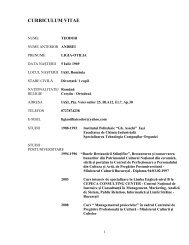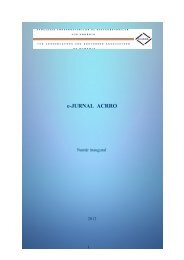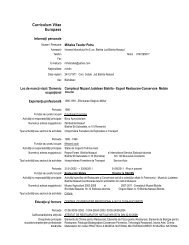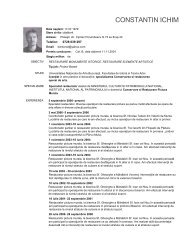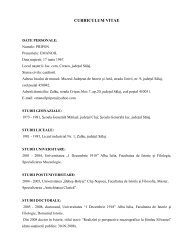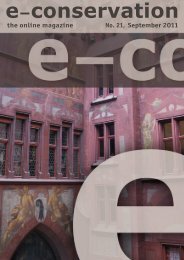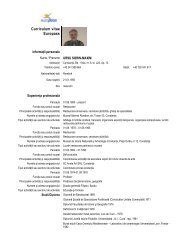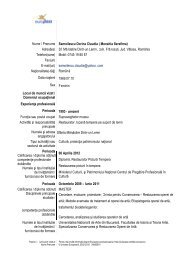e-conservation the online Magazine 16, oct 2010.pdf
e-conservation the online Magazine 16, oct 2010.pdf
e-conservation the online Magazine 16, oct 2010.pdf
You also want an ePaper? Increase the reach of your titles
YUMPU automatically turns print PDFs into web optimized ePapers that Google loves.
IDENTIFICATION OF IVORY BOOK COVERS<br />
Introduction<br />
Identification of Ivory<br />
The cover material of four small books (Figure 1)<br />
was <strong>the</strong> subject of a research project at Library<br />
and Archives Canada (LAC). Three of <strong>the</strong> books<br />
appeared to be produced of ivory or an ivory substitute,<br />
and <strong>the</strong> fourth resembled tortoiseshell or<br />
horn. Information was ga<strong>the</strong>red on <strong>the</strong> history<br />
and characteristics of ivory and ivory substitutes,<br />
while identification tests were administered to<br />
determine <strong>the</strong> exact compositions of <strong>the</strong> book<br />
covers.<br />
Extensive research revealed that <strong>the</strong>re is very<br />
little mention of ivory book covers in literature.<br />
Though <strong>the</strong>se ivory book covers are quite rare,<br />
<strong>the</strong>re are currently over 130 portrait miniatures<br />
in <strong>the</strong> LAC collection. Since <strong>the</strong> history of ivory<br />
use, ivory processing, and risks of deterioration<br />
are very similar between ivory book covers and<br />
ivory portrait miniatures, similar <strong>conservation</strong><br />
recommendations are proposed for use on ivory<br />
book covers.<br />
There are many methods of testing for ivory, yet<br />
<strong>the</strong>re is no test that is reliable, simple, and inexpensive<br />
[1]. In fact, reliability is limited because<br />
most tests can only prove that a substance is not<br />
ivory, and cannot avoid a destructive aspect in<br />
order to provide this diagnosis [1].<br />
Testing methods<br />
Preliminary examination revealed certain morphological<br />
characteristics that aided in material<br />
identification. For example, <strong>the</strong> size of <strong>the</strong> covers<br />
indicated that <strong>the</strong>y could not be composed of<br />
smaller proteinaceous materials such as antler<br />
or horn [2]. Photography under various lighting<br />
conditions also revealed important details, such<br />
as ivory grain patterns under transmitted light.<br />
Lamellae grain patterns are present in longitudinal<br />
cuts in ivory tusks, whereas Lines of Shreger<br />
are present in cross-sections which provide distinction<br />
from mammoth ivory [1].<br />
Figure 1. For referral purposes, from left to right: Book 3, Book 1, Book 2, and Book 4.<br />
e-<strong>conservation</strong><br />
25



